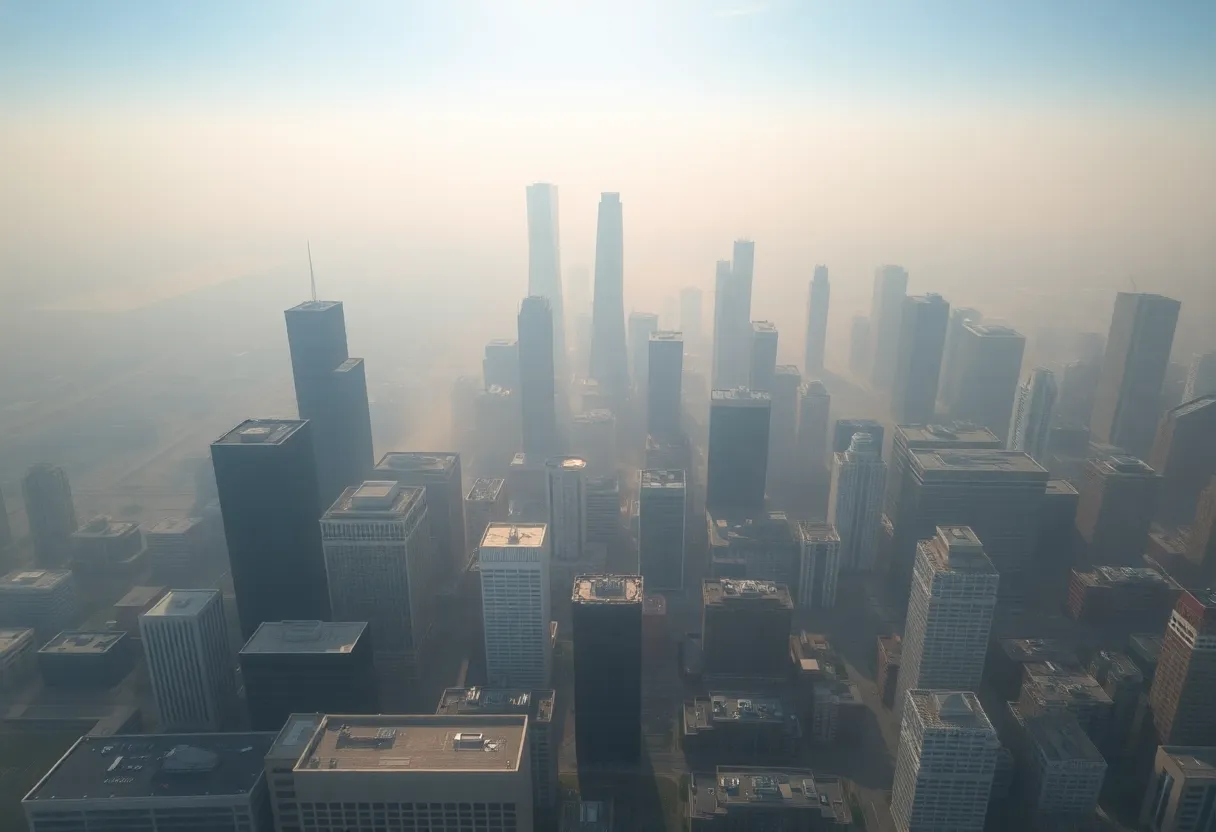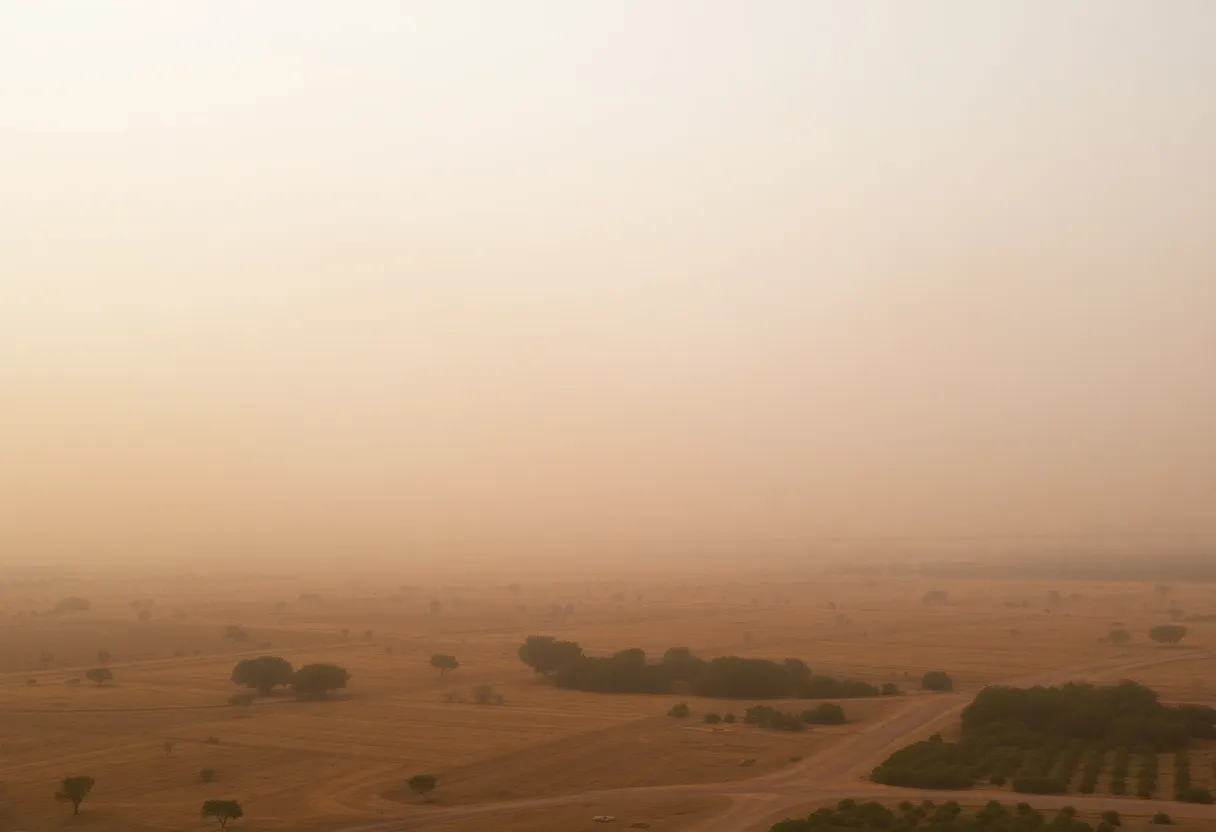News Summary
According to the American Lung Association’s 26th annual State of the Air report, Houston ranks as one of the worst metropolitan regions for air pollution in the United States. The city is seventh for ozone pollution and eighth for annual particle pollution, receiving an overall grade of F. Factors contributing to this poor air quality include agricultural burns and Saharan dust. Health advisories are frequently issued, urging residents to limit outdoor activities during high pollution days, underscoring the ongoing public health concerns related to poor air quality in the region.
Houston
The Houston metropolitan area has been identified as one of the worst regions in the United States for air pollution, according to the American Lung Association’s 26th annual State of the Air report covering the years 2021 to 2023. The report ranks Houston as the seventh-worst area in the country for ozone pollution and eighth-worst for annual particle pollution, receiving an overall grade of F. The city experiences an average of 35 “unhealthy” ozone days per year, a significant increase from 23 days reported previously.
Contributors to Poor Air Quality
Several factors contribute to Houston’s poor air quality, particularly during the late spring and early summer months. One significant source of pollution is annual agricultural burns in Mexico, which release smoke containing small particles harmful to respiratory health. This smoke particularly affects vulnerable populations, including those with asthma and heart conditions, as well as the elderly.
The Saharan dust season, running from June to August, also plays a role in deteriorating air quality. High winds carry dust from the Sahara Desert across the Atlantic to Texas, exacerbating allergies and asthma symptoms like itchy eyes and nasal congestion. Stagnant atmospheric conditions due to high pressure can intensify both ozone and industrial pollution during these periods.
Local and Regional Rankings
Within Texas, Harris County leads in the highest levels of particulate matter (PM), which significantly impacts the air quality in the area. Notably, 18 other counties across Texas, including Travis (Austin), Bexar (San Antonio), Dallas, and Tarrant (Fort Worth), also received an F grade for air quality. The Dallas-Fort Worth metroplex ranks 10th in the nation for the worst ground-level ozone pollution, while San Antonio is ranked 20th.
Health Implications of Air Pollution
The formation of ground-level ozone occurs when sunlight reacts with pollutants from vehicle exhaust, fossil fuels, and industrial emissions. This type of pollution can lead to health issues such as coughing, throat irritation, and the exacerbation of chronic lung diseases like asthma. Particulate pollution, on the other hand, comprises tiny solid particles and liquid droplets that can penetrate the lungs and enter the bloodstream, causing serious respiratory and cardiovascular problems.
Advisories and Recommendations
The Texas Commission on Environmental Quality (TCEQ) regularly issues advisories suggesting that sensitive individuals limit outdoor activities during days of high pollution. The agency recommends lighter workout regimens and suggests scheduling outdoor events during periods when pollution levels are lower as preventive measures against health risks presented by poor air quality.
Ozone action days are frequently declared in Houston, particularly when Saharan dust and agricultural burning coalesce on hot, sunny days. Ongoing public health concerns related to air pollution are expected to persist throughout the warmer months, highlighting the continued need for community awareness and proactive health guidelines.
Conclusion
The air quality issues faced by the Houston area serve as a reminder of the complex interplay of local practices, climatic conditions, and environmental factors. Monitoring and education about air quality health risks remain crucial as the community navigates these challenges in maintaining public health and wellbeing.
Deeper Dive: News & Info About This Topic
HERE Resources
Starbase City Vote: Shaping the Future of SpaceX in Texas
Houston Lawmakers Advocate for Bicycle Safety Study
Brownsville’s Texas LNG Project Leadership Changes and Developments
Pauline Road Fire Sparks Air Quality Concerns in San Jacinto County
Additional Resources
- Houston Chronicle: Texas Air Quality
- Newsweek: Texas Air Quality Warnings Expand
- Click 2 Houston: Air Quality Advisory
- Google Search: Houston Air Quality
- Encyclopedia Britannica: Air Pollution








